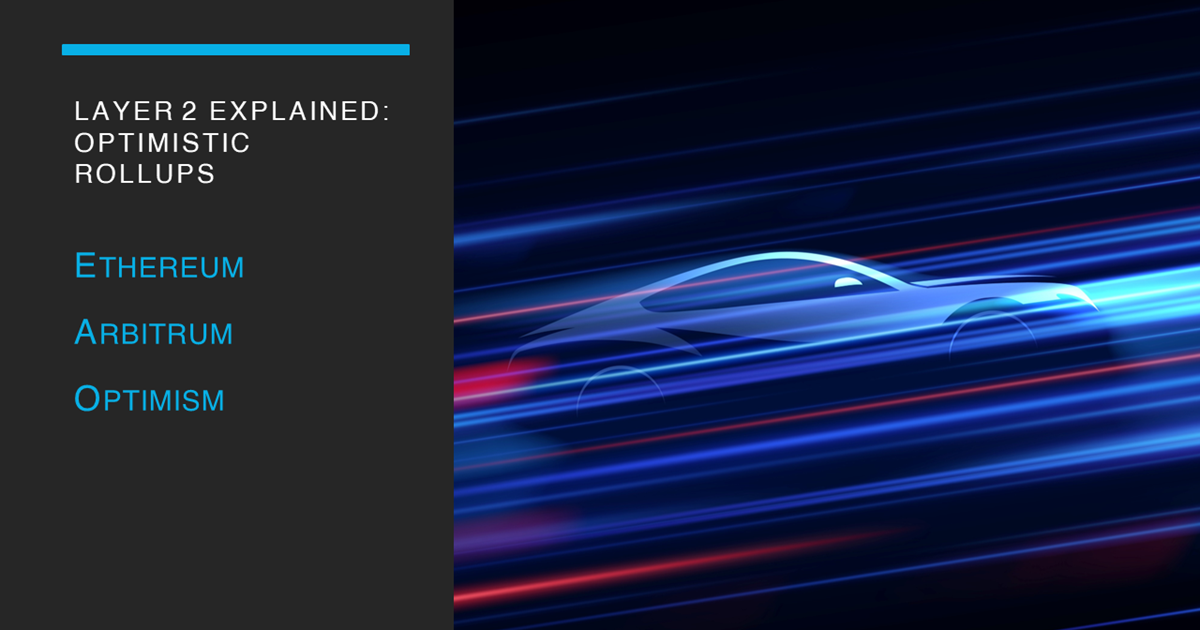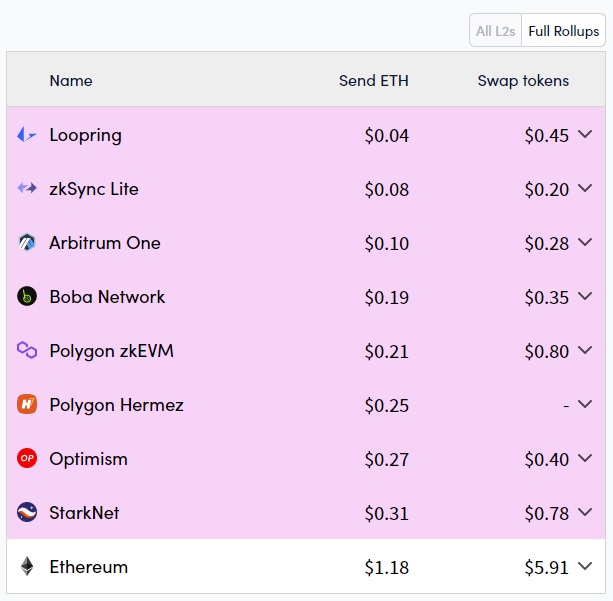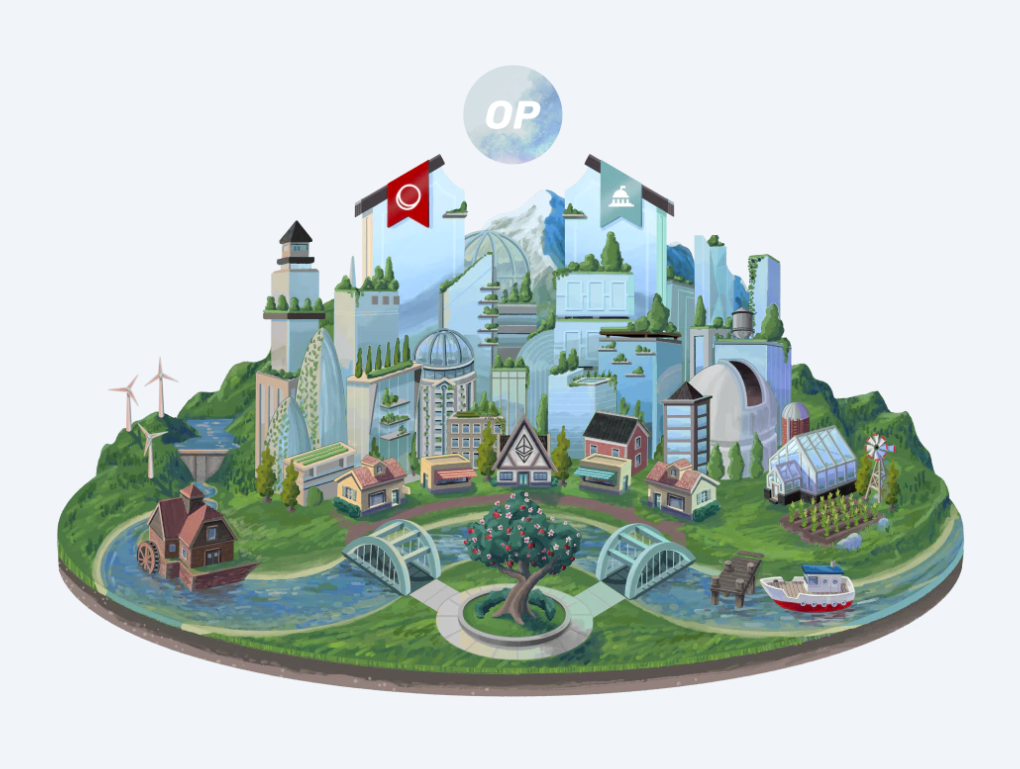Layer 2 Explained: Optimistic Rollups
Layer 2 Explained: Optimistic Rollups--Ethereum, Arbitrum, Optimism and Base

Blockchain technology is transforming the way we store and transfer information and value. However, as the number of users on blockchain networks grows, so do the challenges of scalability, speed, and cost. Enter Layer 2 solutions, a “secondary” framework built on top of an existing blockchain network (Layer 1) to enhance its functionality. Here, we explore the concept of Layer 2 solutions and delve deeply into one of its most promising implementations, Optimistic Rollups.
What is Layer 2 in Blockchain?
A Layer 2 network is a secondary framework built atop an underlying blockchain network to amplify its functionality. It is a set of protocols and technologies that facilitate faster and cheaper transactions by processing them off-chain. This approach lessens the load on the main blockchain, thereby increasing its throughput.
Why do we need Layer 2 Network? The current blockchain infrastructure has limitations in terms of scalability, speed, and cost. At the time of writing, Ethereum main network (Layer 1) processes roughly 24 transactions per second (TPS). As the number of users on a blockchain network increases, the number of transactions also increases, leading to network congestion and higher fees. Since Ethereum has typically processed around 1 million transactions per day, any additional demand on the blockchain can lead to higher prices for users and slower transaction speeds. Layer 2 solutions address these challenges by processing transactions off-chain and reducing the load on the main blockchain.

Ethereum daily transactions have reached roughly 1 million. Source: Etherscan.
Layer 2 solutions’ technological advantages have led to users and developers flocking to its ecosystem. As of the end of March 2023, Layer 2 solutions Arbitrum and Optimism had recorded an aggregated total value locked (TVL) of nearly 5.7 billion USD, with 4.3 billion USD on Arbitrum and 1.4 million USD on Optimism, respectively.
How do Layer 2 solutions work?
Layer 2 networks work by relocating transactions off the main blockchain to a secondary framework. These solutions work like a bypass on the highway, diverting some traffic off the main road to improve traffic flow.
Rollups achieve this by compressing many transactions into a single transaction. The system verifies the single transaction of the rollup on the Ethereum blockchain using a smart contract. This process, known as "batching", combines off-chain computation with on-chain verification.
To make it more visual, think of Rollups as burritos. Just as a chef fills in multiple ingredients to make a burrito, rollups batch multiple transactions into a single transaction, reducing overall transaction fees for end-users. Also, the ingredients are transparent enough that you can see what’s inside the burrito – just as it’s transparent and easy for everyone to verify the transactions in the rollup.
Rollups fall into two types on how they record the transaction data on the layer 1 blockchain: Optimistic Rollups, and zero-knowledge Rollups or zk-Rollups.
Optimistic Rollups vs ZK Rollups
Optimistic Rollups and ZK Rollups are both Layer 2 solutions that address the scalability challenges of the Ethereum blockchain. However, they utilise different approaches. Optimistic Rollups assume that all transactions are valid unless proven otherwise. In contrast, ZK Rollups use zero-knowledge proofs to verify the validity of transactions without disclosing their details.
Presuming all transactions are valid unless proven otherwise, Optimistic Rollups require on-chain verification only in case of a dispute. If the system suspects an invalid transaction, users can submit a “fault proof” to check for its validity. This approach significantly reduces computational overhead and gas costs from transaction verification on the Ethereum blockchain.

Reduction in fees on Layer 2 solutions including Arbitrum and Optimism versus Ethereum mainnet (Layer 1). Source: L2Fees.info.
Optimistic Rollup: Arbitrum
Arbitrum is an Optimistic Rollup solution to scale the Ethereum network. In contrast to Layer 1 Ethereum transactions, Arbitrum transactions do not need Ethereum nodes to process each transaction. Instead, Ethereum adopts an "innocent until proven guilty" approach towards Arbitrum, which rolls up multiple transactions on Arbitrum onto a single transaction onto Ethereum.

Arbitrum (Source: bridge.arbitrum.io)
Arbitrum employs the “fraud proof” mechanism to ensure the validity of transactions. It “optimistically assumes” that transactions on Arbitrum adheres to the correct rules. Validators of the Arbitrum network are responsible for moving the Arbitrum chain state forward on Layer 1. Users can submit “fraud proof" to challenge a transaction if they find it invalid on the Ethereum Layer 1 blockchain.
In July 2022, Offchain Labs, Offchain Labs, the company behind Arbitrum, launched a new chain, “Arbitrum Nova”, besides the Arbitrum Rollup chain (Arbitrum One). Arbitrum Nova is built using Arbitrum AnyTrust, a technology to offer lower fees and faster transactions. Nova targets social and gaming applications, while Arbitrum One continues to be available for NFT and decentralised Finance (DeFi) projects.
Optimistic Rollup: Optimism
Optimism is an implementation of Optimistic Rollups that aims to enhance scalability, speed, and affordability of the Ethereum network. Compared to Arbitrum, Optimism has a longer market history. Optimism rooted from Plasma Group, which focused on developing Plasma chain, another type of Layer 2 solutions. In January 2020, Plasma Group rebranded to Optimism and shifted its focus to Optimistic Rollups.

Optimism. (Source: app.optimism.io)
Optimism and Arbitrum share similar objectives and approaches, but they differ in their implementation and dispute resolution mechanisms. Optimism employs single-round fraud proofs on layer 1, while Arbitrum uses multi-round fraud proofs executed off-chain.
While both are EVM compatible, Optimism utilises Ethereum Virtual Machine (EVM), while Arbitrum runs its own Arbitrum Virtual Machine (AVM). Optimism's state and that of Ethereum will move in accordance whenever Ethereum undergoes a significant overhaul to its consensus algorithm.
Optimistic Rollup: Coinbase’s Base
In 2023, Coinbase, one of the largest cryptocurrency exchanges in North America, joined Optimism, Arbitrum and others in the Optimistic Rollup camp.
Coinbase worked with Optimism Labs to build “Base”, a Layer 2 network atop Ethereum based on Optimism's open-source software stack. That makes Coinbase the first publicly traded company to launch a Layer 2 blockchain network on top of Ethereum. With Base, the centralised exchange aims to bring its products, users and assets into the decentralised crypto ecosystem.
Base targets the Ethereum developer community and Coinbase's existing user base. Base will act as a potential revenue stream and a way for Coinbase to experiment with DeFi. Coinbase is also joining Optimism as a core developer on the open-source OP Stack, a developer toolkit for Optimism.
Conclusion
Layer 2 solutions, like Optimistic Rollups, offer an alternative approach to addressing the scalability challenges of the Ethereum blockchain, as the network gradually undergoes upgrades and improvements. They enable faster and cheaper transactions by processing them off-chain while ensuring their validity through a unique mechanism. With implementations such as Arbitrum and Optimism, Optimistic Rollups are expected to play a significant role in the future of blockchain technology.



